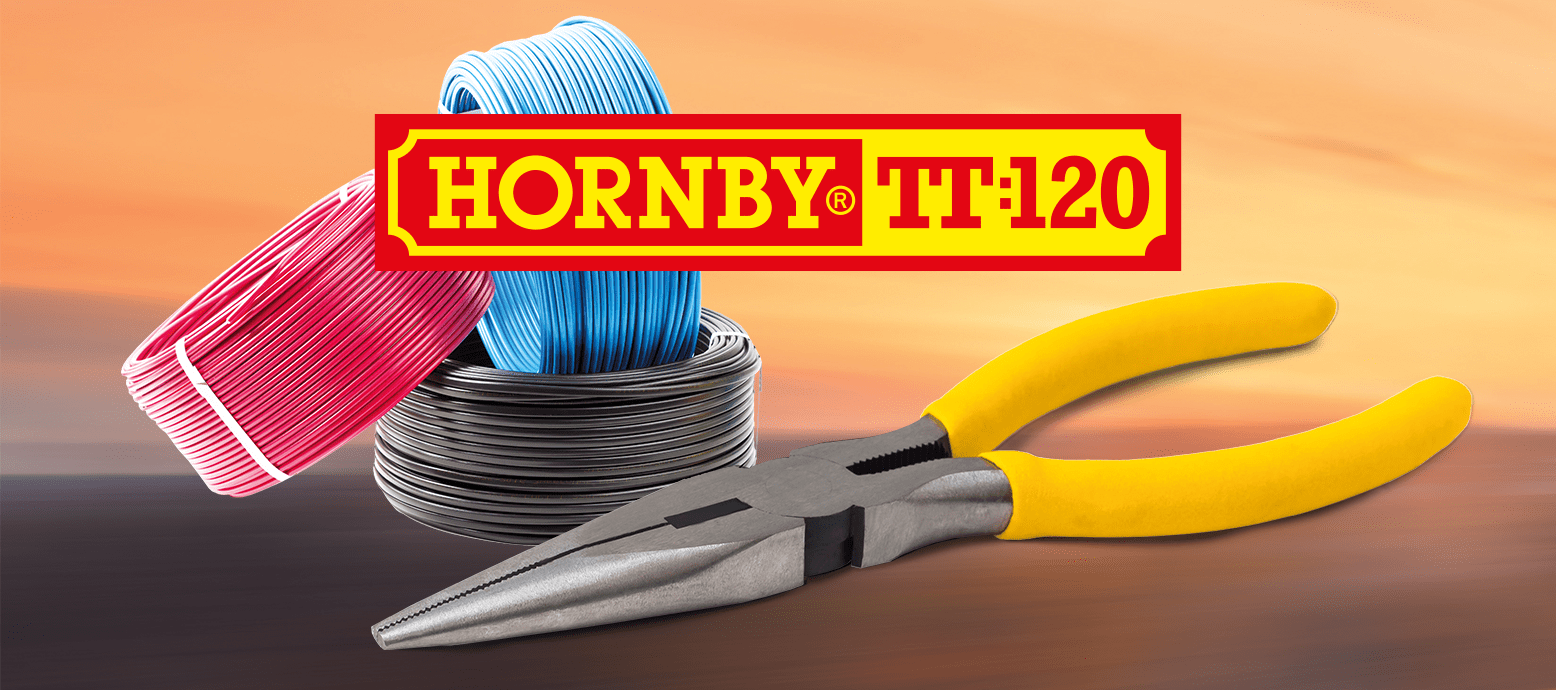Wiring information that will not tie you in knots
Wiring a model railway layout is one of the most satisfying and fascinating parts of the hobby but for some beginners, it may seem a little intimidating, however, it is actually quite straightforward.
A few tips just to get you started
DC (Direct Current) control is the traditional way to power a layout. Two wires go from the power controller to the track and by turning the control knob on the controller this will raise or lower the voltage to the track. By doing this the locomotive will either run faster or slower. If you change the polarity using a reversing switch on the controller the locomotive will reverse direction. It is a simple and reliable way to control a train but remember all locomotives on the same track will all move in unison unless you either place them in a siding (all Hornby TT:120 points are self-isolating), or you break your layout into sections using isolating sections but this can be done much later once you have mastered the basics.
DCC (Digital Command Control) also uses two wires but instead of the voltage rising and falling the track will always have a constant voltage going through the track. Unlike DC operated trains, all DCC locomotives are fitted with what is called a decoder that picks up rapidly coded signals pulsed down the track from a Command Centre, a separate controller or a handheld device. The decoder in each locomotive is ‘listening’ to these pulses waiting for its name and number and to then obey the command. Simply put, think of a dog listening for its name and then doing what it is told to do. DCC will let you control more than one locomotive independently on the same track, unlike the DC controlled layouts.
On a smaller layout, such as the Hornby TT:120 Track Pack, an extended train set layout that requires a board of 54” x 40” (137cms x 102cms), two wires from the power supply to the track would be enough, however, on a much larger layout it may be necessary to add multiple connections to the layout so as to ensure smooth current flow but again that is normally for those layouts built by hobbyists and not really for a beginner. Keep it simple to begin with. Better to walk before you run!


Explore other tips
Shop the range
Discover the full Hornby TT:120 range. Don't miss your chance to join the free Hornby TT:120 Digital Club for exclusive members-only benefits.
View the range





